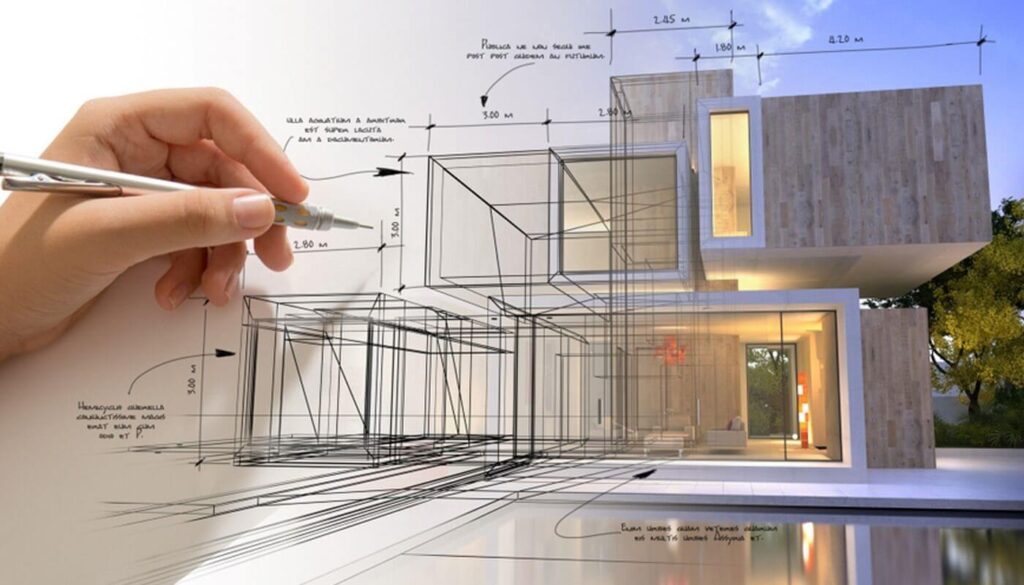Changing Areas: The Vision of CDA Architects for Modern Living
Changing Areas: The Vision of CDA Architects for Modern Living
Blog Article
A Detailed Introduction of Building Designs and Their Influence on Modern City Preparation and Growth
Architectural designs have long offered as a mirror to the societal worths and technological innovations of their time, playing a crucial role in forming modern city planning and development. From the majesty of Neoclassicism to the practical approach of Brutalism, each design has presented unique ideas that affect city appearances and capability.
Historical Overview of Building Styles

As cultures transitioned through the Center Ages, Gothic style emerged, characterized by its verticality and detailed outlining, mirroring the spiritual goals of the period. The Renaissance noted a rebirth of classical suitables, combining art and style in ingenious manner ins which influenced succeeding designs across Europe.

Today, building designs remain to advance, driven by globalization and sustainability worries, reflecting a vibrant interplay in between heritage and innovation. This historical overview emphasizes the importance of architecture as a mirror of social development and as a catalyst for metropolitan growth.
Trick Architectural Styles Explained
The variety of building styles reflects the myriad influences that form our developed environment, each personifying distinct attributes and cultural importances. Key building designs consist of Classic, Gothic, Baroque, Innovation, and Postmodernism, each standing for unique historical contexts and visual philosophies.
Timeless architecture, rooted in old Greece and Rome, emphasizes proportion, proportion, and using columns (cda architects). In comparison, Gothic design, thriving in the center Ages, is identified by sharp arches, ribbed safes, and flying buttresses, developing an aerial top quality in basilicas. Baroque architecture, emerging in the 17th century, is noted by magnificence, elaborate embellishment, and a dynamic interplay of light and darkness
Modernism, which got energy in the very early 20th century, focuses on function over type, utilizing new materials like steel and glass to create minimal structures. Postmodernism, responding versus the austerity of Innovation, welcomes eclecticism and historic recommendation, commonly including lively aspects and paradox.

Influence on Urban Planning
In forming the advancement of cities, architectural designs substantially influence city preparation choices. The selection of building design usually determines the aesthetics, capability, and general personality of city environments. Innovation, with its emphasis on minimalism and capability, motivates open rooms and the integration of technology, shaping city designs that focus on effectiveness and availability. Alternatively, conventional styles may emphasize historic preservation, bring about metropolitan layouts that keep social heritage and advertise pedestrian-friendly atmospheres.
Furthermore, architectural styles can impact zoning regulations and land use policies. Urban coordinators have to consider the prevailing architectural trends when designing districts, ensuring that new developments integrate with existing frameworks. This factor to consider promotes cohesive city landscapes and boosts area identification.
The implementation of particular architectural designs can additionally affect socioeconomic aspects within a city. High-end modern layouts may attract wealthy homeowners and services, leading to gentrification, while a lot more cost effective housing solutions could prioritize practical and lasting styles to suit diverse populations. cda architects. Eventually, the interplay between architectural styles and city preparation creates vibrant cities that reflect both historic context and contemporary demands, shaping the lived experiences of their inhabitants
Sustainability and Modern Style
Architectural designs play a critical duty in attending to contemporary obstacles, particularly in the realm of sustainability. As metropolitan locations expand and ecological issues escalate, modern-day architecture significantly welcomes lasting design concepts that prioritize power effectiveness, source preservation, and very little ecological influence.
Contemporary building movements, such as biophilic layout and green design, supporter for structures that balance with their environments, making use of natural materials and advertising biodiversity. These designs commonly incorporate sustainable power sources, such as solar panels and wind generators, browse around here to lower reliance on fossil fuels and lower carbon footprints.
Moreover, the integration of sophisticated modern technologies, such as smart building systems, boosts energy administration, enhancing source use while guaranteeing passenger convenience. Innovative water management methods, consisting of rain harvesting and greywater recycling, more add to lasting city settings.
Notably, sustainability extends beyond environmental issues; it find more encompasses social and economic dimensions as well. By promoting community wellness and promoting inclusivity, contemporary architectural styles straighten with lasting growth objectives. The advancement of architectural practices proceeds to shape durable cities that not only meet the demands of the existing but also guard the future for generations to come.
Neighborhood Involvement in Layout
Neighborhood engagement in layout acts as a critical bridge in between designers and the populaces they offer, ensuring that the constructed atmosphere reflects the demands and goals of its users. This joint process welcomes community participants to contribute their understandings and preferences, cultivating a sense of possession and duty towards the spaces they live in.
Efficient area interaction uses different methods, such as workshops, surveys, and public forums, to collect diverse point of views. These approaches promote a two-way dialogue, permitting designers to recognize regional contexts while encouraging locals to articulate their issues and wishes. This inclusivity not just improves the style quality however additionally promotes social equity by resolving the unique difficulties encountered by marginalized groups.
Additionally, community interaction can cause innovative services that could not arise in a conventional style process. By incorporating neighborhood knowledge and cultural values, designers can create spaces that reverberate more deeply with customers, improving usability and sustainability. Eventually, focusing on neighborhood engagement in design procedures leads to atmospheres that nurture social interactions, support well-being, and reinforce community connections, therefore playing a crucial duty fit contemporary city landscapes.
Conclusion
Architectural designs have greatly influenced contemporary city planning and development, mirroring look these up progressing social and technical contexts. The combination of historical aesthetic appeals with contemporary needs fosters city atmospheres that prioritize sustainability and neighborhood engagement. As cities proceed to expand and adjust, the recurring discussion between architectural heritage and modern-day style concepts will remain vital in producing comprehensive, lively rooms that improve lifestyle and advertise social equity. The future of city development rest on this unified balance.
Report this page